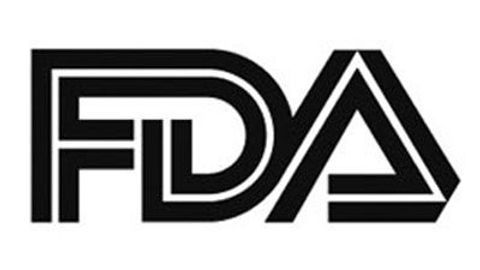FDA Grants Breakthrough Status to Sacituzumab Govitecan in ES-SCLC
The FDA granted breakthrough therapy designation to sacituzumab govitecan for patients with ES-SCLC progressing on platinum chemotherapy, supported by promising antitumor activity in the phase 2 TROPiCS-03 study.

- The FDA granted breakthrough therapy designation (BTD) to sacituzumab govitecan-hziy (Trodelvy) for treating extensive-stage small cell lung cancer (ES-SCLC) in adult patients whose disease has progressed on or following platinum-based chemotherapy.
- Data from the ES-SCLC cohort of the global, phase 2 TROPiCS-03 study support this BTD.
- Based on the study’s results, sacituzumab govitecan plans to be further evaluated in a phase 3 trial in patients with ES-SCLC.
A BTD from the FDA has been granted to sacituzumab govitecan, a first-in-class Trop-2-directed antibody-drug conjugate (ADC), for the treatment of adult patients with ES-SCLC whose disease has progressed on or after receiving platinum-based chemotherapy.1
Findings from the ES-SCLC cohort of the global, phase 2 TROPiCS-03 study (NCT03964727) support this BTD. In the trial, sacituzumab govitecan led to promising antitumor activity in both platinum-resistant and platinum-sensitive disease when used as a second-line treatment for patients with ES-SCLC.
According to results presented at the IASLC 2024 World Conference on Lung Cancer, the investigator-assessed overall response rate was 41.9% (95% CI, 27.0%-57.9%) at a data cutoff date of March 8, 2024, and a median follow-up of 12.3 months (range, 8.1-20.1).2 All of the responses were confirmed partial responses, and other best overall responses consisted of stable disease (41.9%) and progressive disease (9.3%). Notably, 7.0% of patients were not assessed for response.
Among these patients, the disease control rate was 83.7% (95% CI, 69.3%-93.2%), and the clinical benefit rate was 48.8% (95% CI, 33.3%-64.5%). The median duration of response was 4.7 months (95% CI, 3.5-6.7), and 48.2% of patients (95% CI, 23.9%-68.9%) continued to respond at 6 months. Additionally, the median time to response was 1.4 months (range, 1.2-4.2).
3D rendered medical illustration of male anatomy with lung cancer: ©Sebastian Kaulitzki - stock.adobe.com

For safety, the safety profile of sacituzumab govitecan was also consistent with that observed in prior studies. All patients (n = 43) in the ES-SCLC cohort had any-grade treatment-emergent (TEAEs), 74.4% of which were grade 3 or higher. The most commonly observed any-grade TEAEs included diarrhea (grade 1/2, 67%; grade ≥ 3, 9%), fatigue (58%; 2%), neutropenia (12%; 44%), constipation (42%; 0%), nausea (40%; 0%), alopecia (30%; 0%), anemia (26%; 5%), decreased appetite (23%; 0%), abdominal pain (19%; 0%), vomiting (16%; 0%), hypomagnesemia (16%; 0%), and rash (16%; 0%). Serious TEAEs were seen in 51.2% of patients.
Further, 37.2% of patients had TEAEs that led to dose reductions, and no patients had TEAEs leading to discontinuation of treatment. Three patients had TEAEs which led to death, 1 of which was related to the study drug.
With these findings, investigators plan to further evaluate sacituzumab govitecan in ES-SCLC through the initiation of a phase 3 trial.1
About Sacituzumab Govitecan
Sacituzumab govitecan marks the first and only approved Trop-2-directed ADC to show meaningful survival advantages in 2 different types of metastatic breast cancers. This is the second BTD for the agent.
Currently, sacituzumab govitecan is an approved treatment in over 50 countries for patients with second-line or later metastatic triple-negative breast cancer (TNBC). The agent is also approved in more than 40 countries for certain patients with pre-treated hormone receptor-positive (HR+)/HER2-negative (HER2-) metastatic breast cancer.
In the US, sacituzumab govitecan was granted approval from the FDA for the treatment of adult patients with unresectable locally advanced or metastatic TNBC who have received 2 or more previous systemic therapies, with 1 of them having been for metastatic disease. Its other indication in the US is for patients with unresectable locally advanced or metastatic HR+/HER2- breast cancer who have received endocrine-based therapy and at least 2 additional systemic therapies in the metastatic setting.
In addition to other TNBC and HR+/HER2- breast cancer populations, sacituzumab govitecan is undergoing evaluation in a range of tumor types where Trop-2 is highly expressed, including in patients with SCLC and first-line metastatic non–small cell lung cancer. Here, the agent has already shown clinical activity in the TROPiCS-03 and EVOKE-02 studies (NCT05186974), respectively. Further, sacituzumab govitecan is being explored as a potential treatment in head and neck cancer and gynecological cancer studies.
REFERENCES
1. U.S. FDA grants breakthrough therapy designation to Trodelvy® (sacituzumab govitecan-hziy) for second-line treatment of extensive-stage small cell lung cancer. News release. Gilead Sciences, Inc. December 17, 2024. Accessed December 17, 2024. https://tinyurl.com/3af9n47n
2. Dowlati A, Chiang AC, Cervantes A, et al. Sacituzumab govitecan as second-line treatment in patients with extensive-stage small cell lung cancer. Presented at: 2024 IASLC World Conference on Lung Cancer; September 7-10, 2024; San Diego, California. Abstract OA04.04.
FDA Clears 225Ac-SSO110 for Phase 1/2 SCLC and Merkel Cell Carcinoma Trial
January 16th 2025The FDA has approved the investigational new drug application of 225Ac-SSO110, allowing for the start of a phase 1/2 trial in patients with extensive-stage small cell lung cancer and Merkel cell carcinoma.
Read More